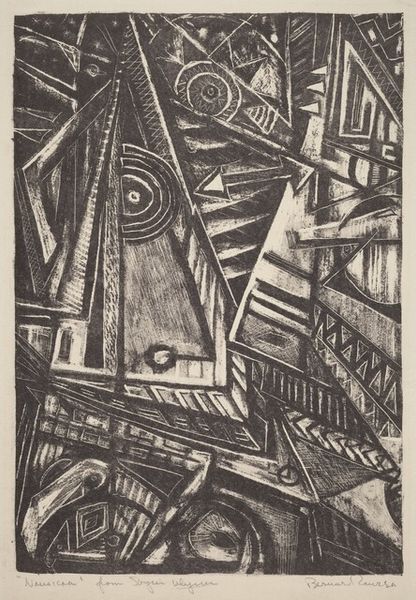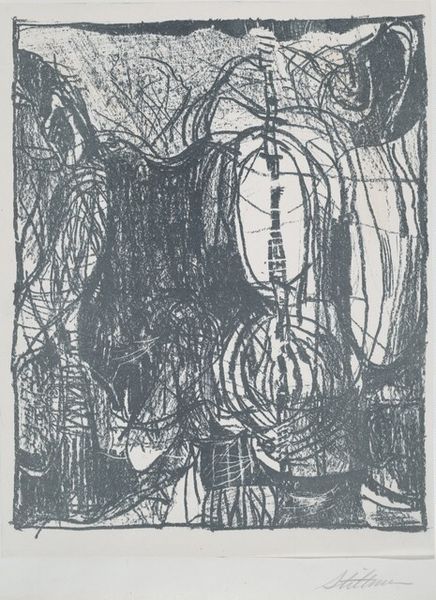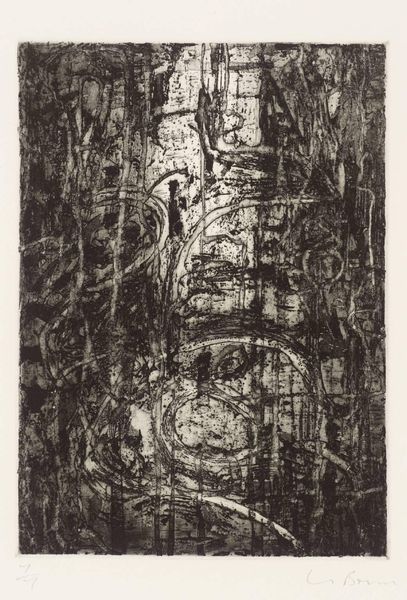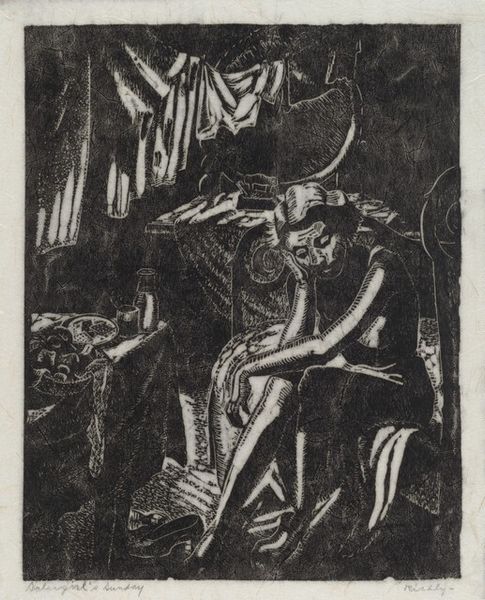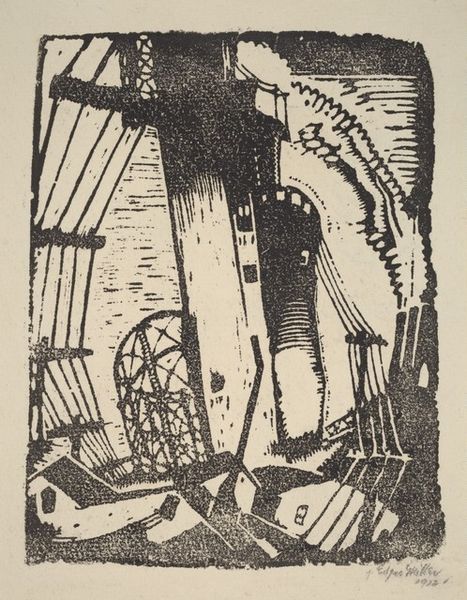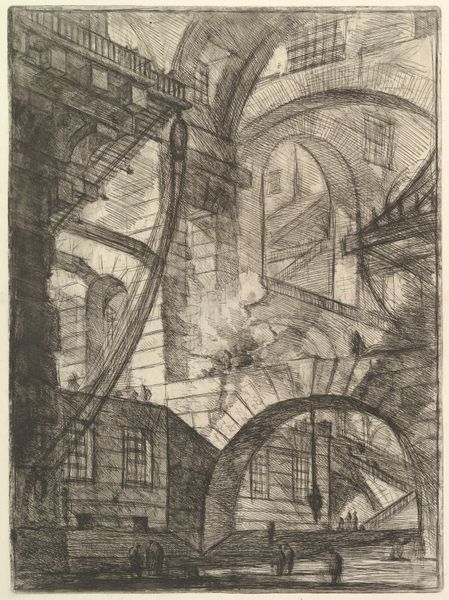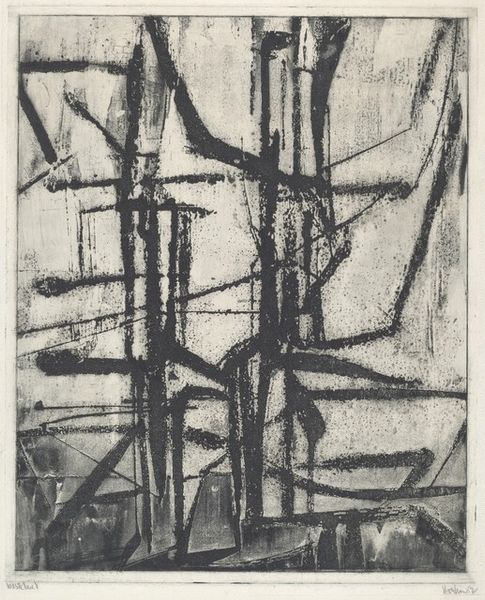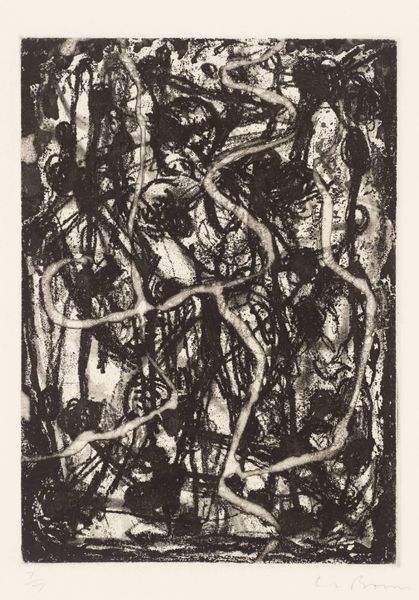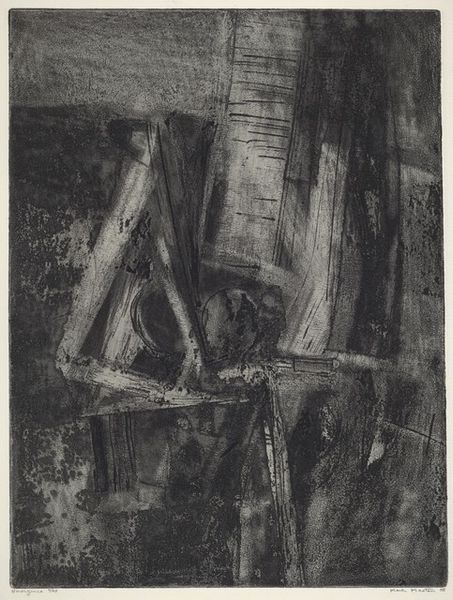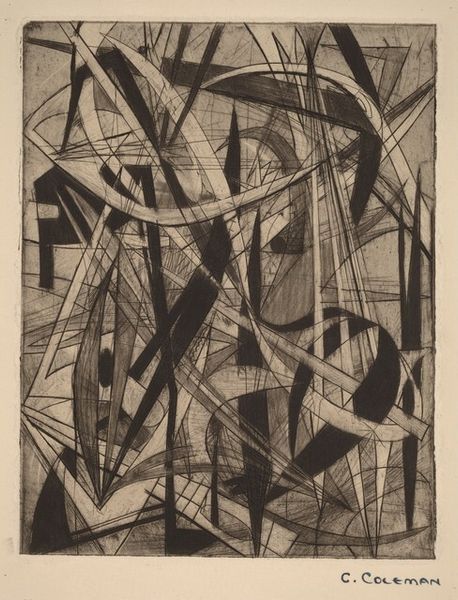
drawing, print, etching
#
drawing
# print
#
etching
#
geometric
#
line
#
cityscape
Dimensions: plate: 301 x 250 mm sheet: 430 x 316 mm
Copyright: National Gallery of Art: CC0 1.0
Editor: Here we have Barbara Neustadt's etching, "The Bridge," created in 1957. The density of lines and the almost chaotic composition give it a really powerful, industrial feel. What's your take on it? Curator: As a materialist, I look at the etched lines, the marks physically impressed onto the plate, the evidence of labor in producing the print. Notice how the dense crosshatching creates different tones. Neustadt's manipulation of the etching process isn't just about representing a cityscape; it’s about revealing the very means of its production. How does the process itself influence your understanding of the subject matter, the "Bridge"? Editor: I guess the grittiness and density mirror the industrial reality of bridges, thinking about the labor and materials used. Is there a commentary on consumerism implied? Curator: Perhaps indirectly. This etching dates from after WWII. It depicts a specific moment in urbanization and rebuilding of infrastructure; think about the steel production and all the societal effort channeled to rebuilding the cityscapes, shaping not just the landscape but the everyday lives and movement of people. Does seeing it in that light change how you feel about the bridge itself? Editor: Definitely! I see it less as a simple depiction and more as a statement on post-war reconstruction and industrial society and the role of technology. Thanks! Curator: And for me, seeing your fresh take helps solidify the lasting commentary about infrastructure, labor, and technology within that period.
Comments
No comments
Be the first to comment and join the conversation on the ultimate creative platform.
